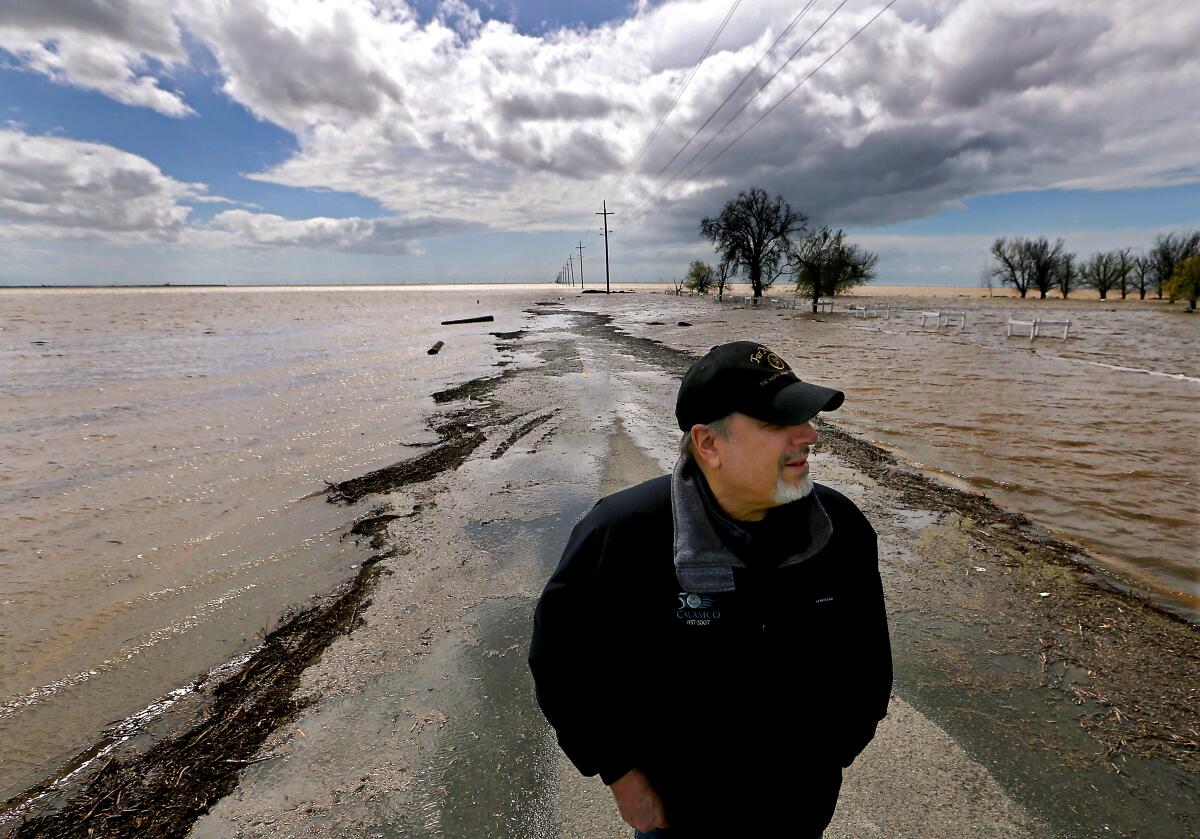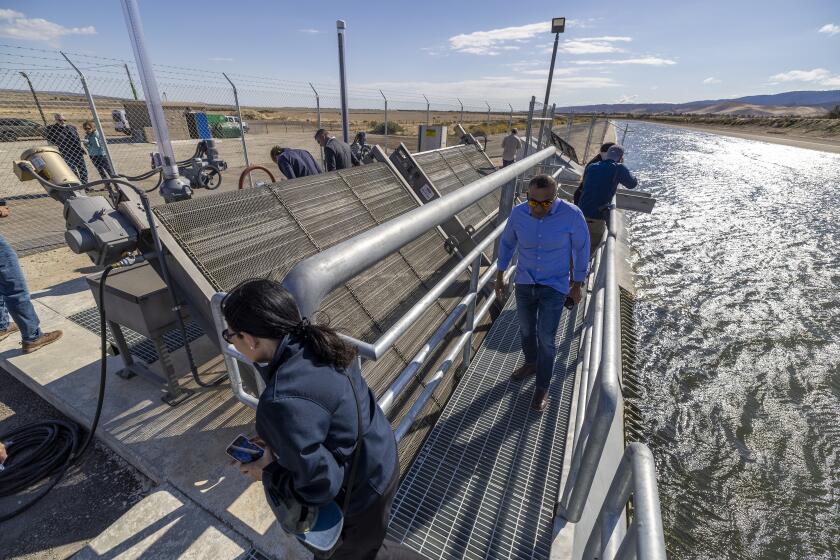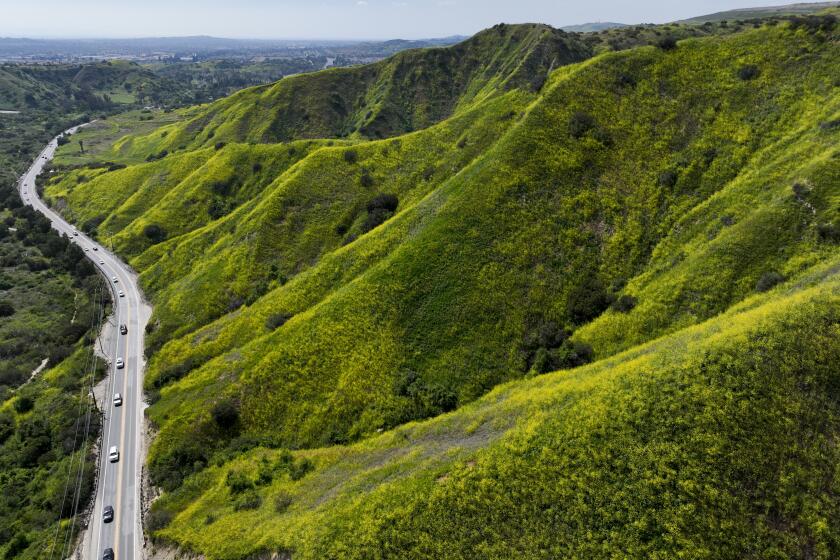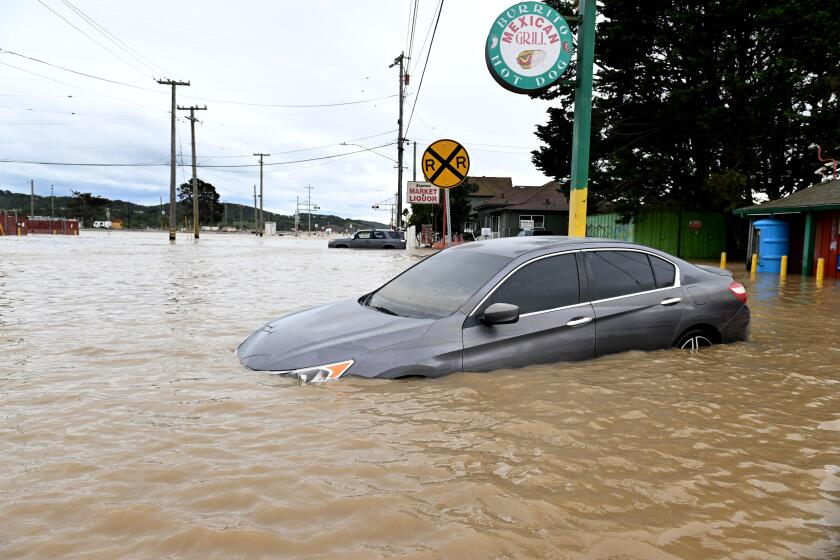There’s no drought anywhere in California: How long that’s expected to last, and why

- Share via
Less than a year after facing historic water shortages, California this week was declared drought-free thanks to a year of epic rains, with an El Niño forecast that could keep wet conditions going into 2024.
The U.S. Drought monitor’s latest data show the vast majority of California reporting no drought as of Oct. 17, though pockets in the northernmost and southeastern parts of the state are still considered abnormally dry.
“For the most part, California had been drought-free” for weeks, but “a little smidgen” remained, said Brian Fuchs, a climatologist at the National Drought Mitigation Center at the University of Nebraska.
A smidgen, indeed: On Oct. 10, only 0.7% of the state was in drought. And that area — a slim portion of Del Norte County in the upper left-hand corner of the state — had been getting consistently less dry since mid-September.
Just a year ago, 99.8% of California was in some level of drought, and 43% of the state was in extreme or exceptional drought, the two most serious levels.
California hasn’t been completely drought-free since two fleeting periods in 2019 and 2020, which were preceded and followed by prolonged dry spells.
The state was drought-free from March to September in 2019, then experienced moderate drought in 1% to 2% of the state before being officially free of drought from November 2019 to February 2020, according to U.S. Drought Monitor data.
Before those instances, “it was all the way back to December 2011” when the state was completely drought-free, Fuchs said.
Part of the reason for the prevalence of drought in the state is California’s size and varied geographic makeup: “The odds of drought somewhere in the state during a [given] time period,” Fuchs said, “doesn’t seem that uncommon.”
Even taking into account size and range of geography, drought has had an outsize effect on the state.
A new water storage facility in the desert will bank supplies underground for Southern California in an effort to help the region adapt to climate change.
The Drought Mitigation Center’s nationwide models are based on a long list of factors: precipitation, snowpack, river levels and more, Fuchs said.
For an area to be declared abnormally dry, most readings must be in the bottom 30th percentile of moisture.
To enter drought status, an area must be within the bottom 20th percentile, which corresponds to a moderate drought.
Extreme drought describes measurements in the 5th percentile of moisture. Exceptional drought is reserved for the 2nd percentile and below, meaning only one or two years out of 100 sampled have ever been as dry, Fuchs said.
Much of the Central Valley was in exceptional drought on Nov. 1, 2022. But after a series of winter atmospheric rivers that showered the Golden State with rain and replenished a depleted snowpack, much of the state exited its drought.
With great abundance comes risk. Forecasters are warning of another potentially wet winter fueled by El Niño, which could bring levee breaches and flooding.
By March, Gov. Gavin Newsom had lifted a number of drought-related restrictions, citing the wet winter.
As the record-setting snowpack melted, rivers and streams across the state carried even more water to previously parched areas. By August, only 6.5% of the state was in drought.
And then Hurricane Hilary, downgraded to a tropical storm by the time it reached California, dumped even more rain on some of the most stubbornly dry regions.
Fuchs was hopeful that the looming El Niño winter — which could bring wetter-than-average conditions to California — might keep the state out of drought.
“Last winter was tremendous as a whole,” he said. “Maybe a couple wet years here will turn the tide.”
He pointed to the seasonal drought outlook issued by the National Weather Service’s Climate Prediction Center, which “shows all of California staying drought-free” through January.
On top of that, coastal areas of the Pacific Northwest that remain drought-stricken are projected to be helped by another wet winter, although drought conditions are expected to persist or worsen in Eastern Washington and central Oregon.
El Niño events usually signify a warmer, drier winter and fall in Washington, Oregon and Idaho, per the U.S. Department of Agriculture.
Though the predictions extend only through January, “right now the projections are looking quite good, with an El Niño winter building upon the very favorable winter we saw last year,” Fuchs said.
All in all, “we could see the state continue to stay drought-free in 2024,” he said.
Although another wet winter would help stave off drought, it raises the specter of fresh disaster, according to experts.
Like last winter, the state could see levee breaches and flooding after a series of rain- and snow-induced disasters in late 2022 and early 2023.
At least 22 people died in the powerful storms that struck the state in late December and early January, according to Los Angeles Times reporting.
Massive snowstorms killed 12 people in the San Bernardino Mountains in early March.
A levee failure on the Pajaro River in Monterey County led to extensive flooding and prompted hundreds of evacuations and dozens of water rescues.
More than 7 million California residents live in an area where they are at risk of flood, officials said — and many don’t even know it.
Along with the risks posed by a potentially wetter-than-normal winter to come, the state still faces a changing climate and the possibility of lingering effects from so many years of drought, according to Fuchs.
“Even when conditions start improving,” Fuchs worries that the landscape across the West could remain damaged by drought.
As a climate scientist, he wonders: “Was there any damage in the forests that will lead to increased fire danger even after the drought” has ended?
Fuchs notes that the state’s groundwater remained severely depleted, even after so much precipitation.
California groundwater levels have risen in many areas this year, but after years of over-pumping, aquifer levels largely remain lower than two decades ago.
And although Lake Mead and Lake Powell, which hold so much of the water Southern Californians use, may have recovered somewhat, numerous dry years have shrunk their levels substantially.
“Even though we don’t see any drought in those areas right now,” he said, “we’re still seeing some of those longer-term impacts.”
When drought inevitably returns, Fuchs worries that forests, groundwater reserves and vital reservoirs may quickly revert to a state of crisis.
“I would hope that the folks out in California and the West as a whole, that conservation is always on the forefront of our minds,” he said of climate change and resiliency.
“Let’s make sure we use our water wisely,” he added, “and that we have some when things do get dry.”
More to Read
Sign up for Essential California
The most important California stories and recommendations in your inbox every morning.
You may occasionally receive promotional content from the Los Angeles Times.















